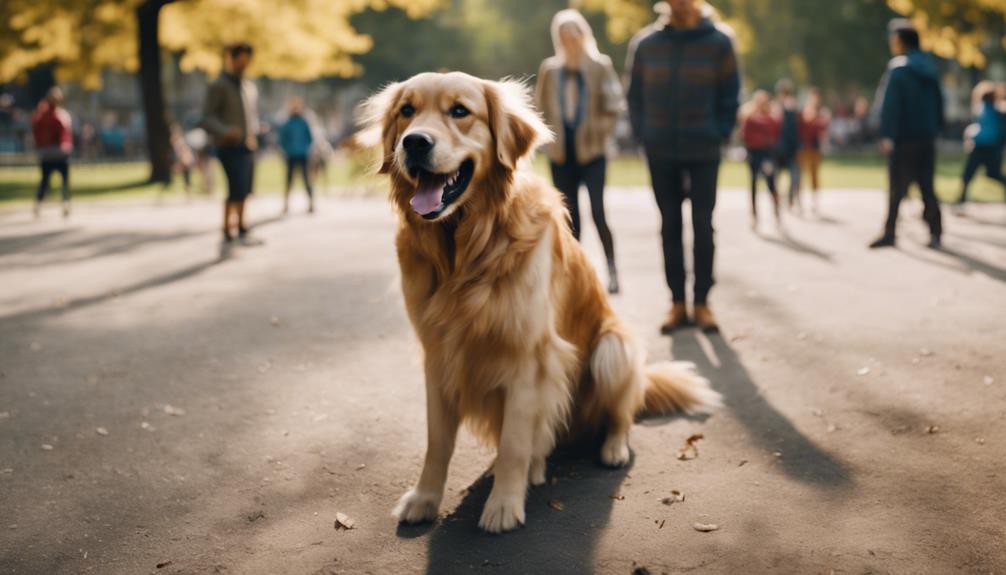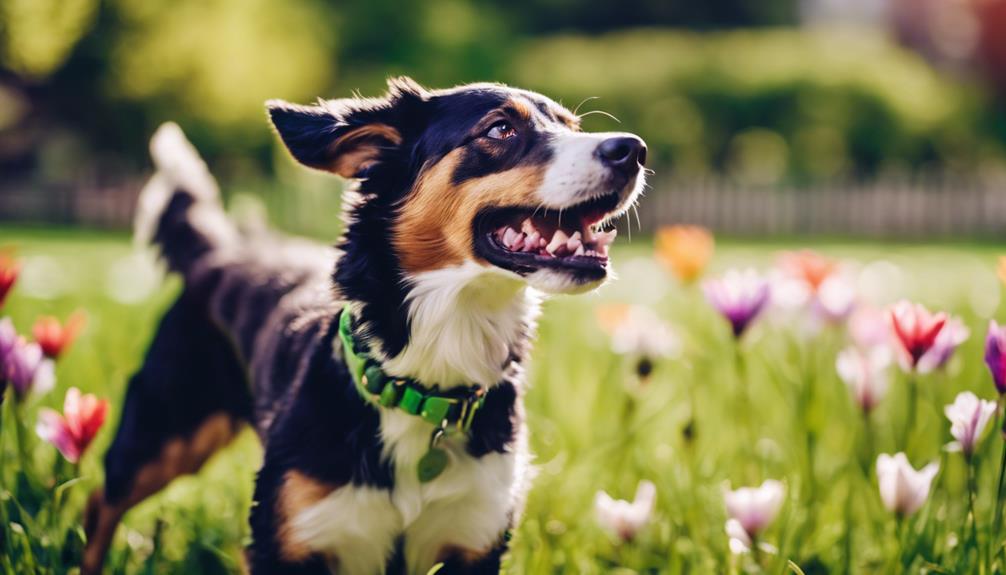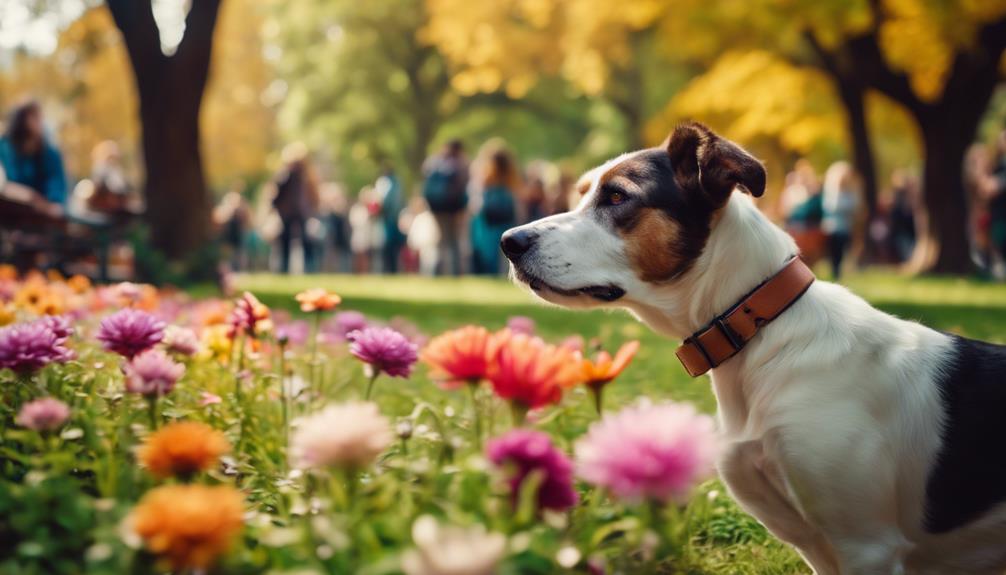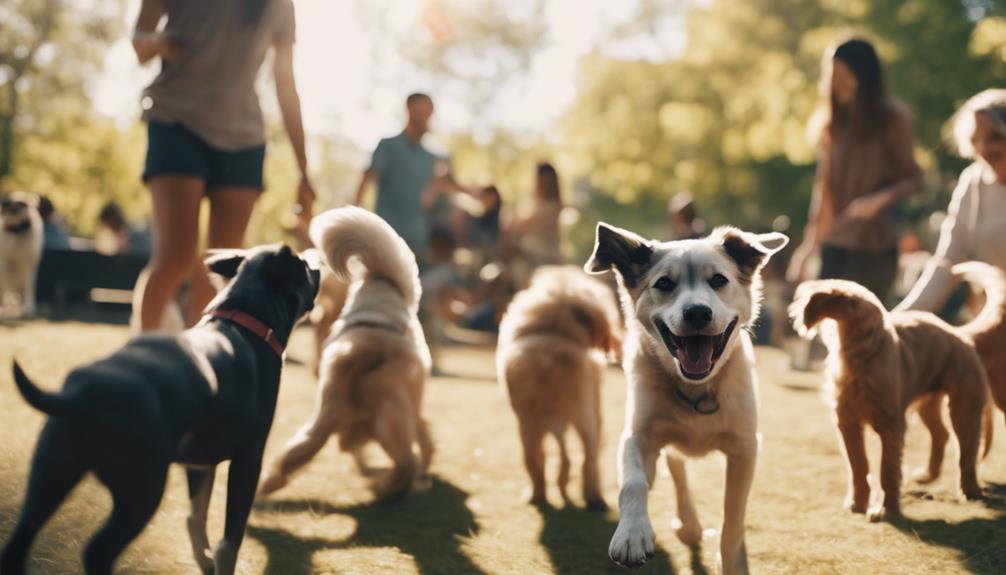Understanding your dog's social needs is crucial for their well-being, as certain behaviors can indicate a desire for interaction. Excessive barking or destructive tendencies may signal distress when left alone, while an eagerness to engage with other dogs or people suggests a craving for companionship. Additionally, changes in eating habits or signs of anxiety can reflect their emotional state. Identifying these key indicators fosters a deeper connection and enhances your dog's quality of life, leading to a more fulfilling partnership. Yet, what specific signs should you be vigilant for in your daily interactions?
Excessive Barking or Whining

One of the most significant indicators that a dog craves social interaction is excessive barking or whining, which often signals their desire for attention and companionship.
Dogs use vocal communication to express their feelings, and when they bark or whine excessively, it can be a clear sign of attention seeking behavior. This vocalization may increase when they are left alone or when family members are nearby but not engaging with them.
Paying attention to your dog's vocal cues is important; it can help you understand their needs better. Recognizing these signs allows owners to provide appropriate interaction, whether through playtime, training, or simply companionship, thus ensuring a balanced and happy environment for their furry friends.
Destructive Behavior at Home
Destructive behavior at home can often stem from a dog's longing for social interaction, as they may resort to chewing furniture or digging when feeling neglected or bored.
This behavior may be exacerbated by separation anxiety, where the dog becomes extremely distressed when left alone. Dogs with separation anxiety often engage in attention-seeking behavior to cope with their loneliness, leading to damage in the home environment. Common signs include torn cushions, clawed doors, and scattered items.
To address these issues, it is essential to provide sufficient physical exercise and mental stimulation. Regular interaction and training can help alleviate the distress and reduce destructive tendencies, fostering a healthier relationship between the dog and its owner.
Seeking Out Other Dogs

A dog that actively seeks out the company of other dogs demonstrates a strong desire for social interaction and companionship. This behavior is often linked to their natural pack mentality, where social bonds are essential for a dog's happiness.
Observing dog body language can provide insight into this need. Here are key signs your dog is seeking out other dogs:
- Approaching Other Dogs: Your dog may walk toward other canines, indicating interest.
- Playful Behavior: They might engage in play bows or tail wagging.
- Vocalizations: Barking or whining can signal eagerness to interact.
- Following Scent Trails: Sniffing out other dogs indicates curiosity and desire to connect.
These behaviors highlight your dog's social needs and the importance of interaction with their peers.
Increased Excitement Around People
In addition to seeking out other dogs, many dogs exhibit increased excitement around people, which further underscores their need for social interaction and emotional connection.
When meeting humans, a dog may display playful greetings, such as jumping up or running in circles. This behavior indicates a strong desire to engage and bond.
Enthusiastic tail wagging is another clear sign of this excitement. A wagging tail can reveal a dog's mood, often signaling happiness and eagerness to connect.
Approaching New Environments

Dogs that crave social interaction often display eagerness when approaching new environments, showcasing their curiosity and desire to explore unfamiliar settings.
Observing your dog in these situations can reveal their social needs. Key indicators include:
- Excited Body Language: Tail wagging and relaxed posture can signal enthusiasm.
- Active Exploration: Sniffing around and investigating new scents indicates curiosity.
- Engagement with Others: Approaching people or other dogs shows a desire for connection.
- Adherence to Dog Park Etiquette: Respecting boundaries and engaging appropriately during group playdates reflects their social instincts.
Understanding these behaviors can help you provide the right opportunities for social interaction, ensuring your dog thrives in various environments.
Changes in Eating Habits
Changes in a dog's eating habits can reveal important clues about their desire for social interaction.
For instance, a decrease in interest in food may indicate that the dog is feeling lonely or anxious, while an increase in requests for treats could suggest they are seeking attention from their owners.
Additionally, if a dog starts eating during playtime, it may be a sign that they are trying to engage more actively with their environment and the people around them.
Decreased Food Interest
A noticeable decrease in food interest can often indicate that a dog is seeking more social interaction rather than simply experiencing a change in appetite. When dogs prioritize social bonding over their food preferences, it can be a sign of emotional needs.
Consider the following signs:
- Ignoring Meals: Your dog may refuse to eat their favorite food.
- Eating Slowly: They might take longer to finish their meals, indicating distraction.
- Seeking Attention: They could follow you around rather than focusing on their food.
- Change in Routine: If they typically enjoy mealtime but now seem disinterested, it's a concern.
Recognizing these behaviors can help you understand your dog's need for companionship, emphasizing their emotional well-being.
Increased Treat Requests
Increased requests for treats may signal a dog's heightened desire for social interaction, reflecting their emotional needs rather than mere hunger.
When dogs seek treats more frequently, it often indicates they are looking for engagement and connection. This behavior can be linked to treat training, where positive reinforcement is used to encourage desired actions.
By offering treats, owners can tap into their dog's reward motivation, which fosters a sense of companionship. A dog that frequently asks for treats could be seeking not only food but also the attention and interaction that accompany receiving a reward.
Recognizing this behavior is essential, as it highlights the importance of social engagement in a dog's well-being and overall happiness.
Eating During Playtime
Frequent instances of dogs eating during playtime can indicate a desire for social interaction, as they may be seeking to balance their need for engagement with their nutritional habits. This phenomenon, known as playtime dining, highlights a dog's instinct to combine social feeding with their playful nature.
Observing your dog's eating behavior can provide insights into their social needs. Consider these signs:
- Eating while playing – They munch on treats during play.
- Sharing food – They bring their food to engage with other dogs.
- Seeking attention – They look for interaction while eating.
- Distraction from play – They pause play to eat, indicating a need for social balance.
Understanding these changes can help ensure your dog's emotional well-being.
Signs of Anxiety When Alone

Separation anxiety in dogs can manifest through various behaviors that indicate distress when left alone.
One common sign is clingy behavior, where the dog follows its owner everywhere, seeking constant companionship. When left alone, anxious dogs may exhibit destructive actions, such as chewing furniture or digging at doors.
They might also vocalize excessively, barking or whining to express their discomfort. Other indicators include excessive drooling or pacing, which suggest a heightened state of anxiety.
Additionally, some dogs may try to escape their environment, potentially putting themselves at risk. Recognizing these signs is crucial for addressing separation anxiety and ensuring your dog's emotional well-being.
Proper training and gradual desensitization can help alleviate these distressing behaviors.

